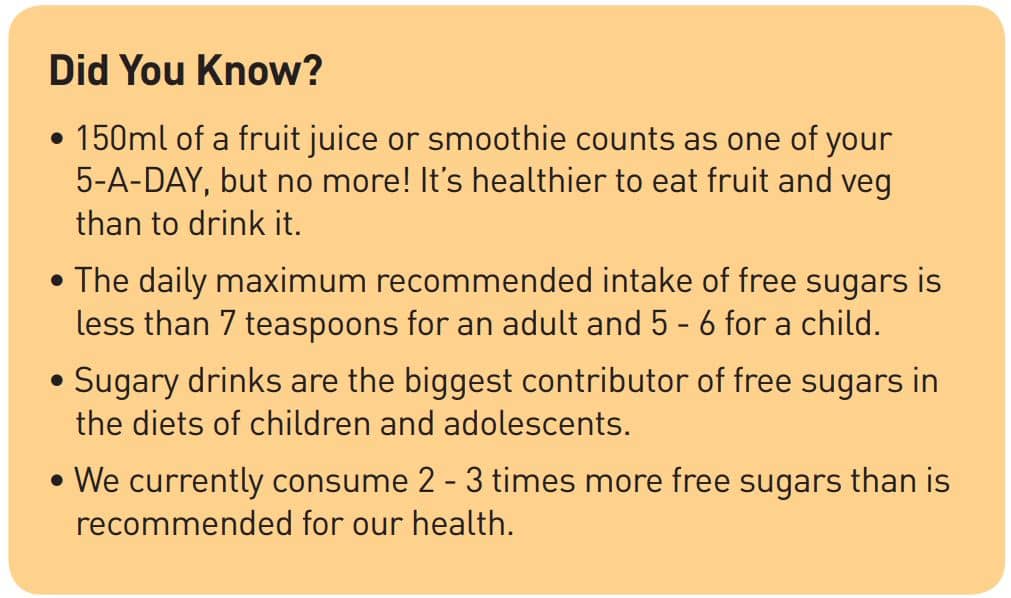Our dental clinic is open and you can read our COVID-safe procedures here.
We have unfortunately had to temporarily stop our beauty treatments in line with Government regulations. All existing appointments will be rescheduled.
Our dental clinic is open and you can read our COVID-safe procedures here.
We have unfortunately had to temporarily stop our beauty treatments in line with Government regulations. All existing appointments will be rescheduled.
We use cookies to ensure that we give you the best experience on our website. If you continue without changing your settings, we'll assume that you are happy to receive all cookies on the Thorpe Lea Dental website.
Find out more
Excess sugar intake is linked to an increased risk of tooth decay, weight gain and type 2 diabetes. In particular, the type of sugars that we eat too much of are called ‘free sugars’. These are mainly sugars which have been added to food and drinks and provide excess calories with limited nutritional value. Some nutritious foods and drinks however, like fruit and milk, contain naturally occurring sugars and it is important not to confuse these with the ‘free’ sugars in our diets. Read on to learn what free sugars are and some top tips for consuming less.
Working out what free sugars are takes some practice. It is healthier to eat fruit and vegetables whole - whether fresh, frozen or dried - because when a fruit or vegetable is processed (e.g. into a smoothie, fruit juice or puree) the sugars become free sugars. Milk and milk based products contain a naturally occurring sugar (lactose), but any sugars added to create flavour are free sugars (e.g. in a chocolate milkshake or flavoured yoghurt). Honey, other syrups and nectars are free sugars and so if you’re looking to cut down your sugar intake, they are not a useful substitute.


Many everyday nutritious foods like breakfast cereals, which contain fiber and important vitamins, can be high in sugar. Checking food and drink labels allows you to spot these sneaky sugars and compare products and brands to make healthier choices. Some companies make label reading easier by using either colour-coded labeling or Reference Intakes on the front of packaging. Sugar is reported on packaging as total sugars, which includes both naturally occurring and free sugars.
Colour-coded labeling makes it easy to see at a glance if a product is high (red), medium (amber) or low (green) in total sugars, fat, saturates and salt. Guidelines for drinks are different to food because they don’t make us feel full and so are easy to over-consume.

It is hard to tell the difference between the amounts of free and naturally occurring sugars that a product contains, because the RI refers to total sugars. Check the ingredient list: if sugar, glucose, honey, syrups and fruit juice concentrates appears in the top three ingredients then it is high in free sugars.
Often, the sugar content on the front of the packet refers to a serving that is smaller than the amount that you may eat or drink. You can reduce your sugar intake by eating and drinking a smaller portion.






Thorpe Lea Dental
Thorpe Road
Staines-Upon-Thames
Surrey
TW18 3EQ
Monday
08:00 - 17:00
Tuesday
08:00 - 17:00
Wednesday
08:00 - 17:00
Thursday
08:00 - 17:00
Friday
07:00 - 16:00
Saturday
By appointment
Copyright © 2023 Thorpe Lea Dental. This website was last updated on 29/03/2022 at 16:01